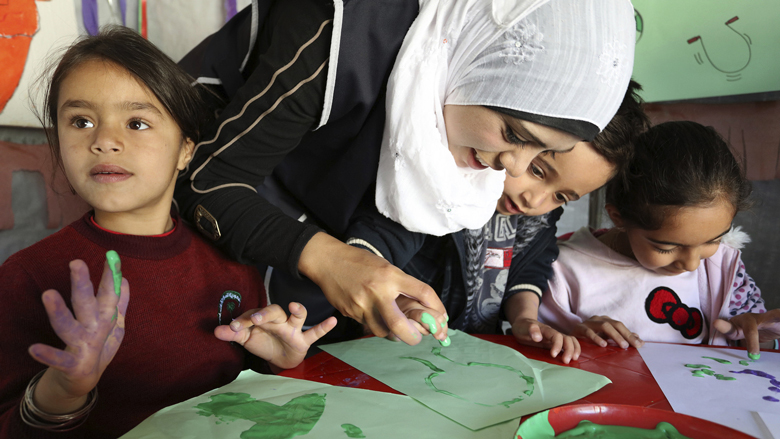
worldbank.org
The Syrian crisis and refugee influx into Lebanon are putting an
unprecedented amount of social and economic pressure on Lebanon’s public
education system. Out of a population of 1.5 million Syrian refugees,
almost 500,000 are children of school age (3–18 years). The protracted
nature of the Syrian crisis and the immense demand for schooling have
strained the quality of public education, too.
In response, Lebanon’s Ministry of Education and Higher Education
(MEHE), launched the Reaching all Children with Education (RACE)
initiative in 2013 to improve access to formal education for Syrian
refugees and underprivileged Lebanese—both objectives that have the
strong support of the international community.
As a longstanding partner of the Government of Lebanon (GoL), the World
Bank has been expanding its support to the education sector. Prior to
the onset of the Syrian crisis, it supported the US$40 million Second Education Development Project. In 2015, the World Bank approved a US$32 million Emergency Education System Stabilization Project; and now the Bank will also approve the US$224 million Support to Reaching All Children with Education 2 program (S2R2).
This support includes an exceptional US$100 million of concessional financing from the International Development Association (IDA)
to address the education sector’s immediate needs and create the
foundations for longer-term recovery. IDA funds are normally only made
available to the world’s poorest countries. The new S2R2 operation comes in parallel with the launching by MEHE of
the second phase of the RACE initiative (RACE 2). During the first phase
of RACE, great achievements were made in terms of access to schools. In
just five years, the number of Syrian students in Lebanese public
education dramatically increased from 18,780 in the 2011/12 school year
to 141,722 students in the 2015/16 school year.
S2R2 will continue to help expand access to schools for all children in
Lebanon, with an increased focus on improving the quality and
inclusiveness of the teaching and learning environment, and on
strengthening the national education system, its policies, planning and
monitoring capacities.
The S2R2 program will support both Lebanese and refugee populations.
Lebanese from the country’s lowest income levels, as well as refugee
children, are largely under-enrolled at pre-primary (in Kindergarten
grades) and secondary or high school levels (Grades 10, 11, and 12).
About 53% of Syrian refugees aged 6–14 years are enrolled in formal
schooling, but only 4% aged 15–18 years. Fewer than 20% of refugee
children aged 3–5 years are enrolled in pre-school.
Under RACE 2, MEHE plans to increase the targeting of the two
under-enrolled age groups. It will do this through early childhood
education programs for the very young, and through accelerated programs
and literacy programs for children who have been out of school for a
while to support their reintegration into the formal education system.
S2R2 will strongly focus on the quality of education. MEHE is committed
to improving the curriculum, as well as the quality of teaching, the
learning environment, and learning materials. MEHE’s initiatives will
include formative assessments at schools; student support program; the
provision of psychosocial and academic counselors to give teachers and
schools guidance on performance; supporting schools to adopt a
learner-centered pedagogy; and community engagement to increase
accountability and foster inclusion.
To deliver on RACE 2, MEHE and related institutions, such as the Center
for Educational Research and Development, will need support. A component
of S2R2 will strengthen education data systems to allow more
evidence-informed decision-making and the development of standards and
policies.
A dialogue on policy between the government, the World Bank, donors and
partners is backed by robust research and analysis. The Bank recently
concluded an Education Public Expenditure Review with key information on
internal efficiency issues related to teacher allocation and to
teacher/student ratios.
With the United Kingdom Department for International Development (DFID)
and United States Agency for International Development (USAID), the Bank
is also implementing a Research-for-Results (R4R) Program to generate
new evidence on student and teacher performance across different types
of schools. This will be used to create policy recommendations that
strengthen the efficiency and quality of education services by public,
private, and non-state providers.